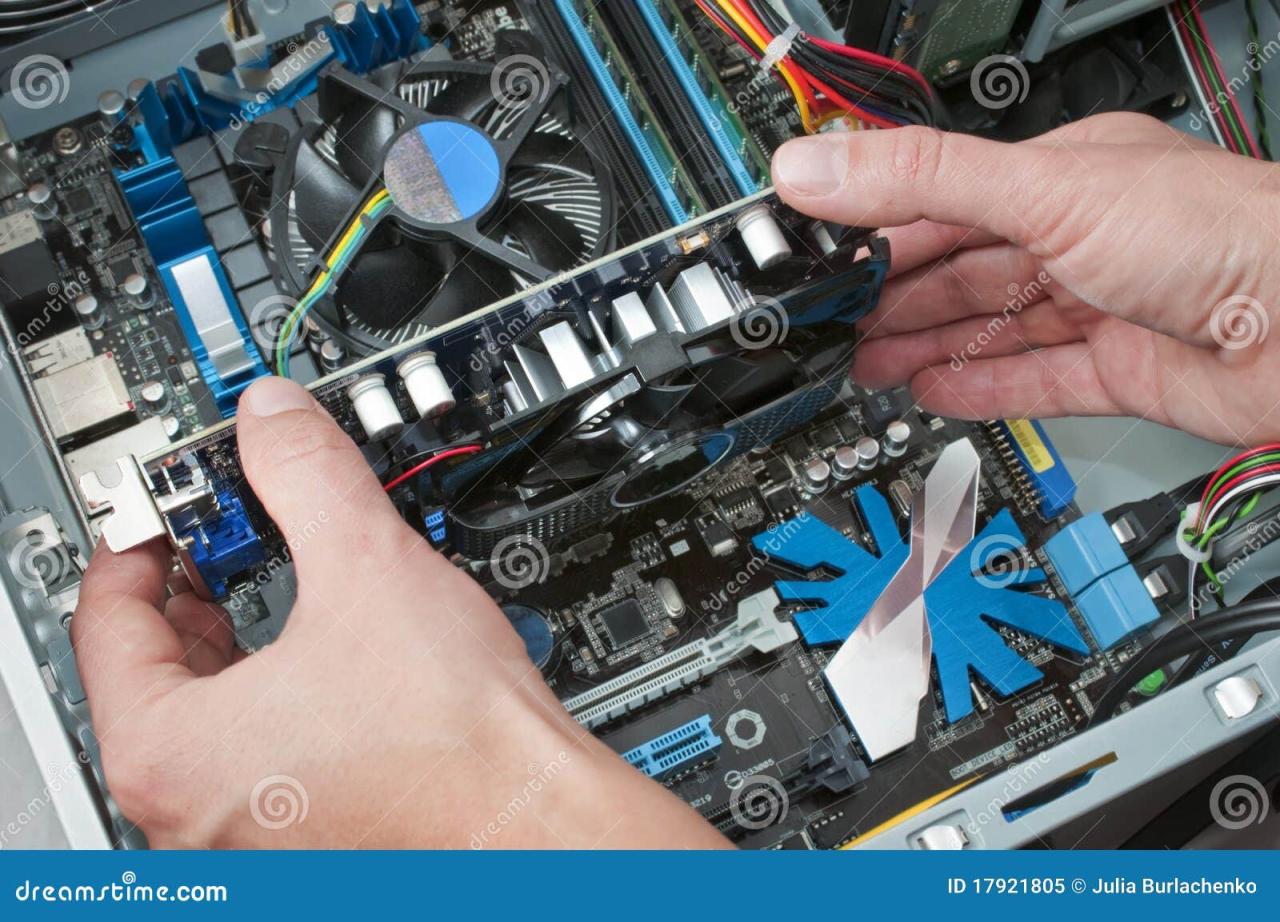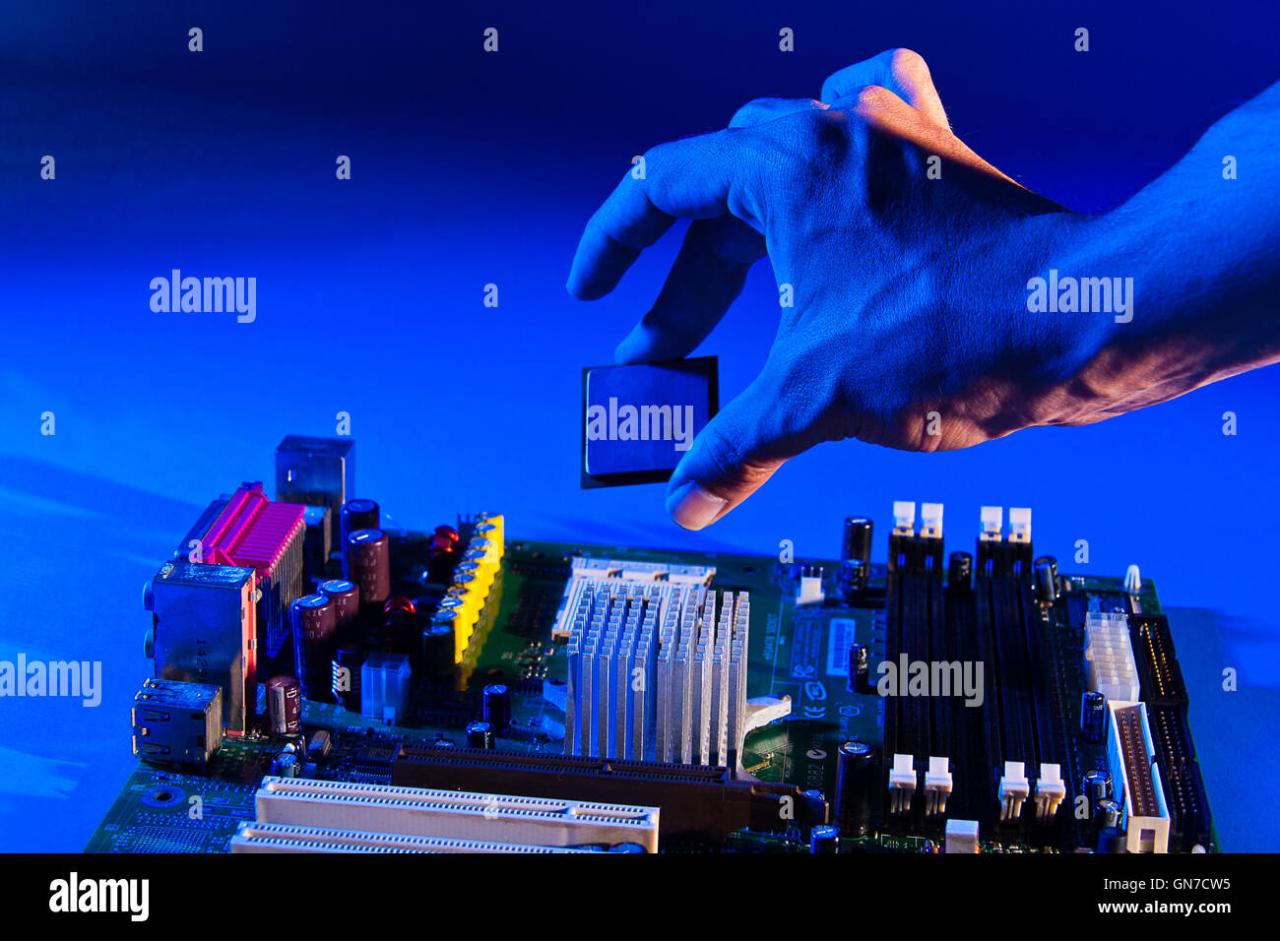PC Builder: Dive into the exciting world of custom PC building! This guide takes you from understanding market trends and choosing components to assembling your dream machine and troubleshooting any issues. Whether you’re a seasoned pro or a complete beginner, we’ll equip you with the knowledge and confidence to build your own powerful PC.
We’ll cover everything from selecting the right CPU and GPU for your needs to mastering cable management and installing your operating system. Learn about different PC builds, the importance of preventative maintenance, and where to find helpful resources and communities to support your journey. Get ready to build something amazing!
Understanding the PC Building Market
The PC building market is a dynamic landscape influenced by technological advancements, economic factors, and evolving user needs. This section will explore current trends, key demographics, price points, and a comparison of pre-built versus custom-built PCs.
Current Market Trends
Current trends show a growing interest in higher refresh rate monitors and more powerful GPUs, driven by the rise of gaming and content creation. We’re also seeing increased adoption of solid-state drives (SSDs) for faster boot times and application loading. The market is also witnessing a shift towards more compact PC builds, thanks to the development of smaller motherboards and components.
Building your own PC can be a rewarding experience, letting you customize every aspect to your needs. If you’re working on AI projects, though, you might need some serious processing power – that’s where a powerful rig comes in handy, especially if you’re utilizing resources like the reality ai lab for data processing. Once you have a beast of a PC, you can tackle even the most demanding AI tasks with ease, making your PC building project all the more satisfying.
Key Demographics of PC Builders
The core demographic of PC builders encompasses gamers, content creators (video editors, streamers, graphic designers), and professionals needing powerful machines for specific tasks. While traditionally a male-dominated field, the PC building community is increasingly welcoming diverse individuals with varying levels of technical expertise.
Price Points and Corresponding Components
PC builds span a wide range of price points, from budget-friendly systems under $500 to high-end configurations exceeding $3000. Budget builds typically prioritize essential components, while high-end systems feature top-of-the-line CPUs, GPUs, and ample RAM. Mid-range builds offer a balance between performance and affordability.
Pre-built vs. Custom-built PCs
| Feature | Pre-built PC | Custom-built PC |
|---|---|---|
| Cost | Generally more expensive for comparable specs | Potentially cheaper, depending on component choices |
| Customization | Limited customization options | Complete control over component selection |
| Warranty | Usually comes with a manufacturer’s warranty | Warranty varies depending on individual components |
| Upgradability | Can be difficult or impossible to upgrade | Easy to upgrade individual components |
Essential Components and Their Selection
Understanding the role of each major component is crucial for successful PC building. This section will detail the function of key components and factors to consider when selecting them for various use cases.
Component Roles and Selection
The CPU (Central Processing Unit) is the brain of the computer, handling calculations and instructions. The GPU (Graphics Processing Unit) renders images for display, crucial for gaming and video editing. RAM (Random Access Memory) provides short-term storage for actively used data. The motherboard connects all components. The PSU (Power Supply Unit) provides power to the system.
Storage devices (HDDs and SSDs) store data long-term.
CPU Selection for Different Use Cases
Choosing a CPU depends on the intended use. Gaming requires a CPU with high clock speed and multiple cores for smooth gameplay. Video editing demands high core counts and strong single-core performance. General use benefits from a balance of both.
RAM: DDR4 vs. DDR5
DDR5 RAM offers faster speeds and higher bandwidth compared to DDR4, leading to improved performance in demanding tasks. However, DDR5 is currently more expensive. The choice depends on budget and performance needs.
Sample $1000 Gaming PC Build
This build prioritizes gaming performance within a $1000 budget. Prices fluctuate, so these are approximate values.
- CPU: AMD Ryzen 5 5600X ($200)
- GPU: NVIDIA GeForce RTX 3060 ($300)
- Motherboard: B550 Motherboard ($100)
- RAM: 16GB DDR4-3200 ($80)
- SSD: 1TB NVMe SSD ($100)
- PSU: 650W 80+ Gold PSU ($80)
- Case: Mid-Tower Case ($50)
The PC Building Process
Assembling a PC is a rewarding experience. This section provides a step-by-step guide, emphasizing best practices for a successful build.
Step-by-Step PC Assembly
The process generally involves installing the CPU and cooler, mounting the motherboard, installing RAM, adding storage, installing the GPU, connecting the PSU, and finally, connecting all the cables.
Cable Management and Organization

Proper cable management improves airflow, reduces clutter, and enhances the overall aesthetic appeal of the build. Use cable ties and zip ties to bundle and organize cables neatly.
Grounding and Static Electricity Prevention

Static electricity can damage components. Always ground yourself before handling components, using an anti-static wrist strap or by touching a grounded metal object.
Operating System Installation
Once the hardware is assembled, install the operating system (e.g., Windows) using a bootable USB drive. This involves booting from the USB drive and following the on-screen instructions.
Ensure you have a valid product key for your chosen operating system.
Double-check all connections before powering on the PC for the first time.
Troubleshooting and Maintenance
This section addresses common problems encountered during PC building and maintenance.
Common PC Building Problems and Solutions
| Problem | Solution |
|---|---|
| PC won’t boot | Check all connections, ensure PSU is properly connected, reseat RAM modules. |
| No display | Check GPU connection, ensure monitor cable is properly connected, try a different monitor. |
| System instability | Check temperatures, update drivers, ensure sufficient power supply. |
| Overheating | Clean fans and heatsinks, check thermal paste application, improve case airflow. |
Regular Maintenance and Cleaning
Regular cleaning prevents dust buildup, improving cooling and system stability. Use compressed air to clean fans and heatsinks.
Preventative Maintenance Checklist
Regularly check temperatures, clean the case, update drivers, and run system scans for malware.
PC Building Communities and Resources
Engaging with online communities and utilizing reliable resources enhances the PC building experience.
Benefits of Joining Online Communities
Online communities provide a platform to seek advice, share experiences, and learn from others. They offer a wealth of knowledge and support.
Reputable Online Resources
Websites like Tom’s Hardware, AnandTech, and PC Gamer offer in-depth reviews and comparisons of PC components.
Finding Reliable Deals
Websites like PCPartPicker can help you find the best prices on components. Keep an eye out for sales and discounts.
Helpful Websites and Forums
- r/buildapc (Reddit)
- Tom’s Hardware
- AnandTech
- PCPartPicker
Advanced PC Building Techniques

This section explores more advanced techniques for PC enthusiasts.
Overclocking
Overclocking involves increasing the clock speed of components beyond their factory settings to boost performance. However, it carries risks, including instability and component damage. Proper cooling and monitoring are essential.
PC Cooling Solutions
Air cooling is a cost-effective and widely used method. Liquid cooling provides superior cooling performance for high-end systems, especially for overclocking.
Building your own PC can be a rewarding experience, letting you customize every component. However, if you’re stuck on a specific component choice and need some quick research, remember that sometimes your go-to research tools might be down – like when you find chat gpt down , hindering your progress. Luckily, plenty of other resources are available, so keep searching and you’ll find the perfect part to complete your build!
Custom Water Cooling Loop, Pc builder
Building a custom water cooling loop involves assembling a reservoir, pump, radiator, tubing, and coolant to circulate coolant through the system. This requires meticulous planning and execution to avoid leaks and damage.
Motherboard Form Factors
ATX is the standard form factor, offering ample space for components. Micro-ATX is smaller, suitable for compact builds. Mini-ITX is the smallest, ideal for ultra-compact systems. The choice depends on case size and desired component selection.
Final Conclusion: Pc Builder
Building your own PC is a rewarding experience, offering unparalleled customization and a deep understanding of your technology. From selecting the perfect components to the satisfying click of each connection, the process itself is engaging. This guide provides a solid foundation; remember to leverage online communities and resources for continued learning and support as you embark on your PC building adventures.
Happy building!
Building your own PC can be a rewarding experience, letting you customize every aspect. But even with careful planning, things can go wrong, much like with a DJI drone. If your drone needs fixing, check out this great resource for dji drone repair before tackling more complex repairs yourself. Once you’ve mastered PC building, maybe you’ll even build a drone yourself!
Questions Often Asked
What’s the best time to buy PC components?
Black Friday and other major holiday sales often offer significant discounts.
How often should I clean my PC?
At least every 3-6 months, depending on usage and environment.
What happens if I accidentally short-circuit my PC?
It could damage components; use proper grounding techniques to prevent this.
Where can I find reliable component reviews?
Websites like Tom’s Hardware, AnandTech, and Gamers Nexus are excellent resources.
